We arrived in Maputo on August 30, and the next day met with our work package partners Carlos Shenga and Lorraine Howe of Centre for Research on Governance and Development (CPGD). We took a taxi to their office in Marracuene, a town 30 km north of Maputo. Following a morning meeting over coffee to discuss plans for CESET WP 2, Carlos and Lorraine accompanied us to the grounds of Feira Internacional de Maputo – FACIM 2023, an annual expo fair. The event has run for 58 years since the late colonial period.
Currently sponsored by the Ministry of Industry and Commerce through the Agency for the Promotion of Investment and Exports (APIEX), FACIM is a multi-sectoral trade fair, billed as “showcasing the country’s potential for production and export while promoting business and investment opportunities in the various segments of economic activity.” It serves as a platform for exchange and cooperation, with activities including exhibitions halls and booths, seminars, promotion sessions, contact exchanges, and local foods – we had an excellent lunch of grilled fish, salad and chips.
We were interested in observing which countries were present; for instance, other SADC countries such as South Africa and Malawi had exhibition booths, but India did not. France and TotalEnergies, the French multinational oil and gas major and key actor in Mozambique’s offshore gas reserves, whose production has been disrupted by ongoing unrest in Cabo Delgado province, had a minimal presence. We had opportunities to speak to entrepreneurs, domestic producers, investors and business representatives, including emerging renewable energy (RE) companies and conventional energy and mining firms.
As part of WP 2, we are interested in how energy transitions are presented and justified as part of national-level plans, including through narratives, images and discourse. Our research aims to explore and unpack the dominant narratives, including those focusing on transition pathways, and whether (and how) community-led and off-grid energy projects fit in to these broader national development objectives, with Mozambique as a case study.

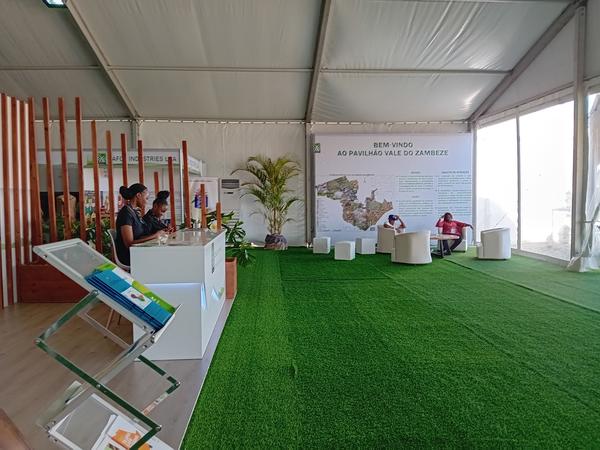
Caption: Entrance to the Zambeze Valley Pavilion (Pavilhão do Vale do Zambeze), FACIM 2023
We visited the Energy Pavilion (Pavilhão de Energia), observing the many displays, what the presenters were highlighting in the booths, and how they may envision certain energy futures for the country.
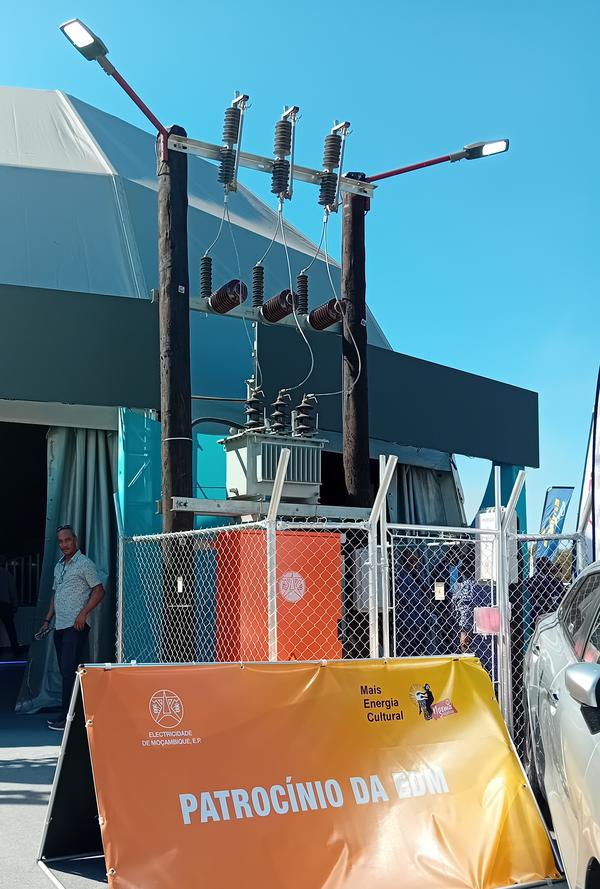
Caption: Electricidade de Moçambique, E.P. (EDM), the state-owned electricity provider, displaying street lighting equipment
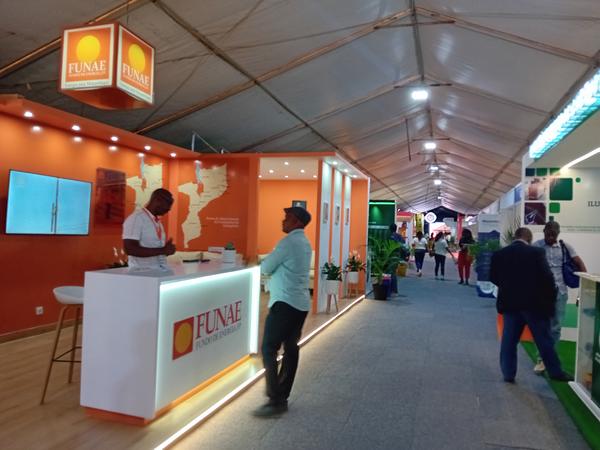
Caption: Fundo de Energia (FUNAE), a Mozambican public agency charged with financing and implementing renewable energy projects, displays materials in the Energy Pavilion
 An explicit aim for a diverse energy mix was apparent in the pavilion -- a push for supplying natural gas, and alongside this, support for renewable energy (RE) technologies, both grid-connected and off-grid solar, and large hydroelectric installations – long a key feature of the country’s energy mix. Founded in 1997, FUNAE held a visible presence but so did several private firms that have begun operations in the country in recent years, aiming to expand the market for off-grid energy technologies, including Solar Works and Ignite Power. Accordingly, we observed a mix of market logics along with state-led development, top-down and bottom-up approaches, with different implications for users and residents.
An explicit aim for a diverse energy mix was apparent in the pavilion -- a push for supplying natural gas, and alongside this, support for renewable energy (RE) technologies, both grid-connected and off-grid solar, and large hydroelectric installations – long a key feature of the country’s energy mix. Founded in 1997, FUNAE held a visible presence but so did several private firms that have begun operations in the country in recent years, aiming to expand the market for off-grid energy technologies, including Solar Works and Ignite Power. Accordingly, we observed a mix of market logics along with state-led development, top-down and bottom-up approaches, with different implications for users and residents.
 Hidroeléctrica de Cahora Bassa (HCB), a major state-owned company, was also present. Its display stressed the critical importance of the HCB dam to national development through its generation capacity, massive reservoir, power stations, transmission lines and its contributions in the past 15 years, including electrifying primary schools, health clinics, and rural administrative posts while generating revenues for state coffers.
Hidroeléctrica de Cahora Bassa (HCB), a major state-owned company, was also present. Its display stressed the critical importance of the HCB dam to national development through its generation capacity, massive reservoir, power stations, transmission lines and its contributions in the past 15 years, including electrifying primary schools, health clinics, and rural administrative posts while generating revenues for state coffers.
Across the hall, we viewed details, plans and maps of smaller-scale renewables and installations including Mocuba solar power station, an operational, utility-scale 40 MW solar plant in Zambézia province, in the central coastal region. A public–private partnership project developed by a consortium with EDM and Norwegian investors (including the private firm, Scatec Solar), Mocuba sells its electricity to EDM under a 25-year power purchase agreement (other grid-connected solar power stations promoted in this exhibit included Dondo, Lichinga and Metoro).
In recent years, the Government of Mozambique has positioned the country to become an important generation hub within the Southern African Power Pool (SAPP), central for sourcing an expected increase in regional energy demand in the coming years. The government also has a stake in continuing global demand for gas amid shifting pressures on energy security in Europe, for example.
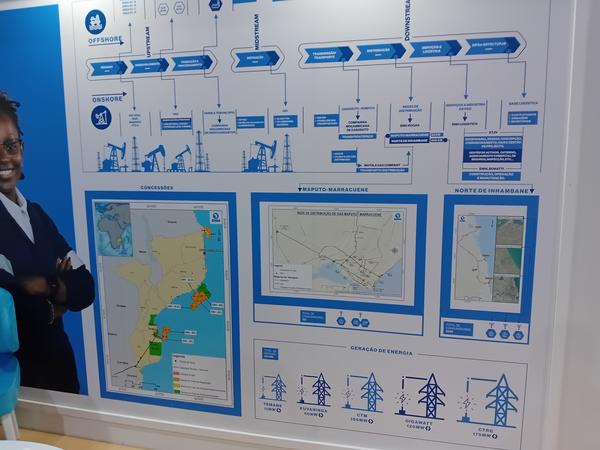

Caption: A display from Empresa Nacional de Hidrocarbonetos (ENH) shows the extent of offshore and onshore gas operations ranging from production to distribution to export and domestic consumption.
This display featured a map of incipient gas distribution networks in Maputo-Marracuene (with 321 consumers only), and a second in Inhambane province, centred on Vilankulos (with 2,260 consumers). Whether there are plans in place to expand the Maputo-Marracuene network was not specified.
ENH also included details and diagrams of several gas-fired electricity generation plants – Temane, Gigawatt, CTM, and CTRG – which have sprouted up near Ressano Garcia on the border with South Africa, along with development corridor that links Maputo with Gauteng province, SA for transport, trade and regional integration. An expanding geography of energy infrastructure was in evidence here.
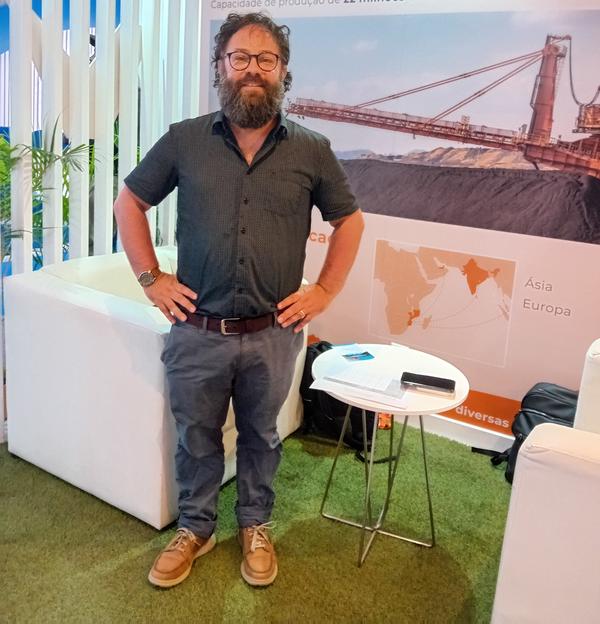
We viewed FUNAE’s map of electrified districts, and nearby a display from Vulcan Mozambique, a coal company recently operating in Tete province. After the withdrawal of Rio Tinto (UK), in 2014, and Vale (Brazil), in 2021, from coal operations in Mozambique amid uncertainty in global markets, Indian firms purchased two major mining sites. Vulcan, a subsidiary of Jindal Steel and Power, replaced Vale, which until then had been a key player in the sector. Growing resource needs in India mean that Indian firms and investors eye untapped thermal and coking coal reserves that are plentiful in Tete. Despite the Indian government’s commitment to promote and invest in clean energy, in 2022 coal accounted for 70% of power generation in India, while renewables counted for only 12% (see Ellis-Petersen in The Guardian, 15/11/2022).

Additionally, a display (above) focused on initiatives to support Mozambique’s energy transition, with details on carbon capture and the REDD+ initiative, a project for distributing improved cook-stoves in Maputo, Sofala and Manica provinces with the aim of reducing emissions, and project for producing various primary materials as feedstock for biofuels. This includes a phase 1, a bio-refinery plant in Nampula province for extraction of bio-oils, production of sugarcane bagasse and bio char for carbon sequestration, with the involvement of industry associations.
These displays suggested diverging energy transition pathways, a point that if acknowledged was left unaddressed at FACIM.

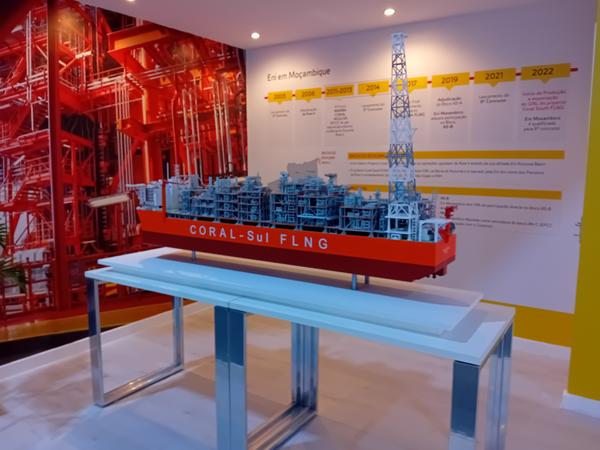
Caption: Coral Sul Floating Liquefied Natural Gas (FLNG), from ENI Mozambique
We viewed this model (left) of a floating LNG plant (left), which the Italian oil and gas firm ENI plans to tow and anchor in the Rovuma Basin, situated off the coast of northern Mozambique. ENI’s display explained, “Coral Sul develops the gas from Mozambique's huge offshore fields by transforming it into LNG that can be transported by ship and distributed globally. At the heart of the project is Coral Sul FLNG, a concentration of technology and sustainability.”
The narrative continues, “With the first LNG cargo leaving Coral Sul, Mozambique has become an energy-producing country, acquiring the capacity to independently support its own development and contribute to security of supply. The result of a series of Eni exploration successes in an area that was considered a frontier, Coral South is proof of the great potential of liquefied natural gas.” We can see here that ENI, an energy multinational, is framing its strategy in relation to national development objectives, central to the material development of Mozambique’s energy sector.
Additionally, separate pavilions housed each of Mozambique’s 11 provinces (for instance, one is shown at left with displays of local produce, fisheries and seafood from Inhambane). Another was dedicated to ‘Lusofonia,’ or people who speak the Portuguese language, either as native speakers or as learners, or the community of people culturally and linguistically linked to Portugal, whether historically or by choice. The Community of Portuguese Language Countries (CPLP) hosted the Lusofonia pavilion.

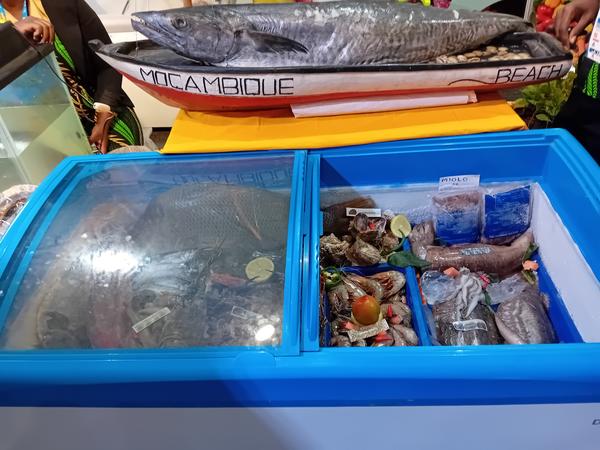

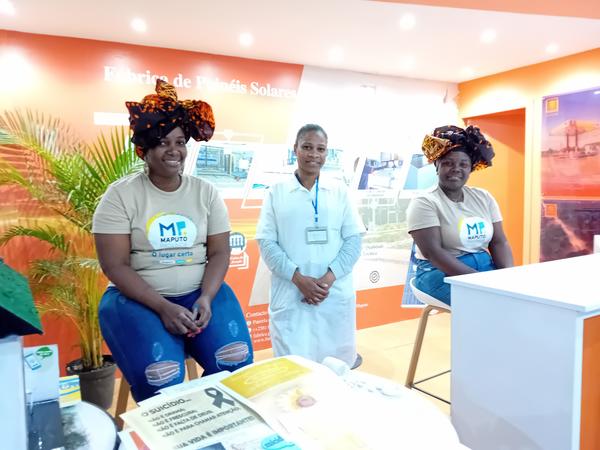
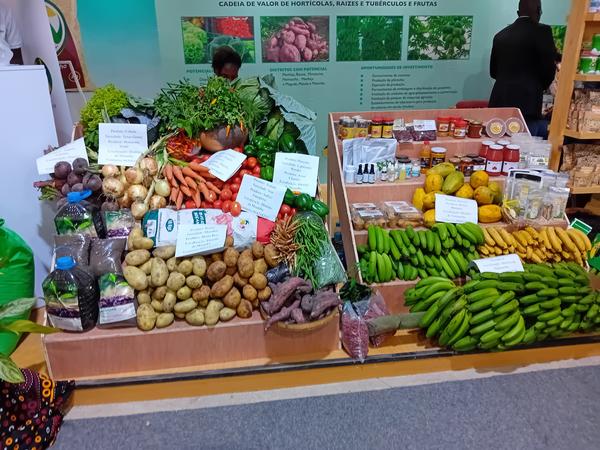
Later, we met with our CESET project partner Fátima Artur, who has worked for several decades in EDM, and is now working on a World Bank-funded urban Bus Rapid Transit (BRT) project for the Maputo metropolitan region (including the satellite city, Matola). It includes traffic calming and car reduction measures, pedestrianized areas, and other initiatives. The programme will use compressed natural gas (CNG) for public buses, as Maputo and Matola already have gas facilities. We sought her perspective on changes taking place in Mozambique’s renewable energy sector, regulatory and policy changes. Fátima told us about the Energy Sector Working Group, which mainly includes northern European donors, and has been led by Norway and Sweden. Belgium is involved but mainly focuses on supporting mini-grid development. By contrast, Norway and Sweden are funding national grid expansion. Actors from non-Western countries, such as China or India, Turkey or UAE, have not been involved, despite being invited.
Based on contacts we made at FACIM, we interviewed Nuno Simbine, TotalEnergies, an LNG business developer and manager of solar pumping stations, along with other solar projects, and we interviewed Nuno Lopes, a manager of Solar Works! Other interviews during the week included Ricardo Pereira, President, Associação Moçambicana de Energias Renováveis (Mozambican Association of Renewable Energies - AMER); Clementina de Sousa, BRILHO; and Olga Utchavo Madeira, renewable energy and energy efficiency director with EDM. We also met with Delio Carlos Marinze, in project management and installation at Escopil, a private firm, and João Feijó, a senior researcher with Observatório do Meio Rural (Rural Environment Observatory - OMR), which studies rural development and has looked at the conditions of displaced people in Cabo Delgado province.
Speaking with Ricardo Pereira, he emphasized that since AMER’s founding in 2017, it has become a coordinating platform for information for government, companies and multilateral partners. AMER receives support from the EU, through Get Invest, GIZ and other donors, including the German Association of Federations. He stressed that AMER needs to stand on its own, through a mix of policy and advocacy, and its communication strategy. One of the most active groups within AMER is the Mozambique Women in Energy (MWE), which formed last year, along with BRILHO. AMER has become closely involved in the issue of VAT exemption for solar PV equipment, something we explored further in other discussions during the week.














